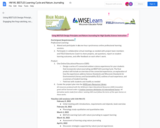
Overview of the project with requirements, timeline, and stipends.
- Subject:
- Environmental Literacy and Sustainability
- Environmental Science
- Life Science
- Material Type:
- Learning Task
- Author:
- Sandy Benton
- Date Added:
- 02/09/2022

Overview of the project with requirements, timeline, and stipends.
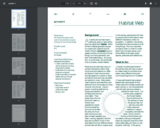
In this activity, students explore the web of connections among living and non-living things by mapping an ecosystem. Flashcards and yarn help students see the interconnectedness of an ecosystem, and how cutting one of the connections (for example, by applying pesticides) impacts the entire web.

In Headlines and High Water, players take on the role of a young journalist in the fictional town of Twin Lakes, where the annual Cherry Festival is thrown into chaos by a catastrophic flood. The player is tasked with interviewing locals and writing stories to keep the town informed—all while staying safe during the town’s worst flood of the century.
Throughout the game, players build trust with the townspeople and interview a cast of quirky characters—like Birdie, the aptly-named nature conservationist, and Fred Finkler, the gardener who’ll talk your ear off. In the end, the player’s reporting will determine if Twin Lakes is still around a year from now, or if future floods wash the town right off the map.
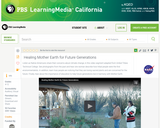
In this video segment adapted from United Tribes Technical College, meet Native Americans who are concerned about climate change and believe that action today can help future generations once again live in harmony with Earth.
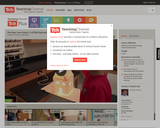
In this lesson, 6th grade teacher Lawrence Perretto blends STEM and Project Based Learning by having his students construct model homes to explore how thermal energy moves. Students use iPads and thermometers to gather data about their model homes and determine how to make their homes more energy efficient. Lawrence gives his students a variety of materials to construct insulation with. After insulating their model homes, students conduct more thermal testing. Lawrence concludes the lesson by asking students reflection questions about what they learned through this project.

This activity simulates the extraction of limited, nonrenewable resources from a "mine," so students can experience first-hand how resource extraction becomes more difficult over time. Students gather data and graph their results to determine the peak in resource extraction. They learn about the limitations of nonrenewable resources, and how these resources are currently used.
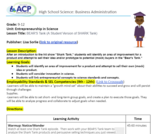
After an introduction to the hit show "Shark Tank," students will identify an area of improvement for a product and attempt to sell their idea and/or prototype to potential (mock) buyers in the "Bear's Tank."

This is the beginning of a high school level unit plan applying Dr. Gholdy Muhammad's five pillars of culturally and linguistically responsive teaching to an inquiry into solar energy.
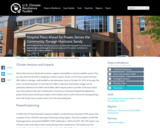
The combined heat and power system at Greenwich Hospital in Connecticut kept the lights on through Hurricane Sandy, and the system continues to support community resilience.
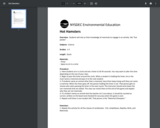
Game for students to play - similar to hot potato. Engaging activity to help with retention.
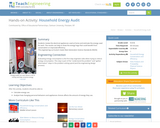
Students review the electrical appliances used at home and estimate the energy used for each. The results can help to show the energy hogs that could benefit from conservation or improved efficiency.

Students complete three different activities to evaluate the energy consumption in a household and explore potential ways to reduce that consumption. The focus is on conservation and energy efficient electrical devices and appliances. The lesson reinforces the relationship between power and energy and associated measurements and calculations required to evaluate energy consumption. The lesson provides the students with more concrete information for completing their culminating unit assignment.
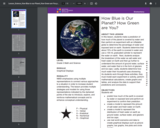
This is a detailed, full lesson plan that explores the waters that cover our Earth. It incorporates math activities and has students think critically about their use of fresh water and what changes they might make in their own lives to conserve water.
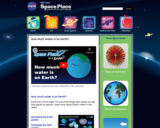
This website has a video, reading passage, and a poster on how much water is on Earth to help younger students learn that there is a lot of water on Earth and that water is in various places in the world. This resource is from NASA Science.

Kindergarten students associate the sun with light and warmth. This lesson helps them expand this knowledge by getting their hands dirty! They will fill cups with soil, water and rocks and place them in the sun and shade for a while. By finding out how they can tell where a cup has been stored, they will learn how the sun affects Earth's surface.
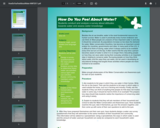
Learning Objectives: Students will be able to:
• Design a survey questionnaire on the ways people use water
• Analyze survey data to determine heavy water use activities versus light water use activities
• Assess community members water knowledge

We are making a Lava Lamp using few ingredients which you can find in your kitchen. It takes only 2 minutes to setup.If you like to make a Non Stop Lava Lamp...
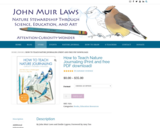
"How to Teach Nature Journaling" by John Muir Laws and Emilie Lygren (2020) is a free PDF curriculum guide to support educators as they model and teach science thinking by keeping a nature journal. The benefits of nature journaling are that it helps students to:
• slow down and pay attention
• wonder and ask questions
• supporting creativity and critical thinking skills
• by seeing themselves as scientists, engaging in authentic science inquiry
• nurturing a connection with nature
• building equity”
(p. 7 of How to Teach Nature Journaling by Law and Muir, 2020)
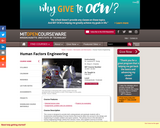
This course is designed to provide both undergraduate and graduate students with a fundamental understanding of human factors that must be taken into account in the design and engineering of complex aviation and space systems. The primary focus is the derivation of human engineering design criteria from sensory, motor, and cognitive sources to include principles of displays, controls and ergonomics, manual control, the nature of human error, basic experimental design, and human-computer interaction in supervisory control settings. Undergraduate students will demonstrate proficiency through aviation accident case presentations, quizzes, homework assignments, and hands-on projects. Graduate students will complete all the undergraduate assignments; however, they are expected to complete a research-oriented project with a final written report and an oral presentation.
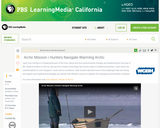
In this video segment adapted from the National Film Board of Canada, learn how the Inuit people have used their traditional knowledge to understand and adapt to changes in their Arctic environment, particularly when hunting and navigating the landscape.